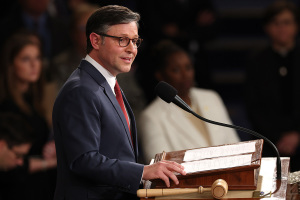Stephen Hawking and Yuri Milner Announce $100M Project for First Journey to the Stars
World-famous cosmologist and physicist Stephen Hawking and Russian billionaire Yuri Milner announced the Starshot Project, a $100M research project that aims to make interstellar travel possible. According to a report in The Guardian, the project will develop a lightweight spacecraft so that it can travel at one-fifth of the speed of light and get to the nearest star.
The Breakthrough Starshot Project was unveiled by Hawking and Milner as part of the Breakthrough initiative that both of them have been collaborating on since 2012. This project is the third of such initiative, and according to the report, it will look into knowledge and technology that will allow a featherweight robot spacecraft to travel to the nearest star system to the earth, the Alpha Centauri star system. In order to travel 4.37 light years - 25 trillion miles or 40,000,000,000,000 kilometers - the spacecraft must travel almost at the speed of light.
What it hopes to develop is a "nanocraft" that weighs just a little more than a sheet paper and is equipped with a sail like that of a kite. It must be made of fabric "only a few hundred atoms in thickness." This "nanocraft" will be transported by a 100 billion-watt laser powered light beam at 60,000 km per second.
According to Popular Science, the initiative is studying the feasibility of such travel in the meantime, while the possibility of coming up with prototypes will likely take decades to happen. If it is indeed feasible, it is estimated that the journey to the Alpha Centauri star system will take about 20 years, rather than 30,000 years as initially estimated with current space travel technology.
In another report in The Independent, Hawking was quoted at the event saying this initiative is another way for humans to transcend our limits. He said that, "The limit that confronts us now is the great void between us and the stars. But now we can transcend it, with light beams, light sails, and the lightest spacecraft ever built. Today we commit to this next great leap into the cosmos, because we are human and our nature is to fly."





























